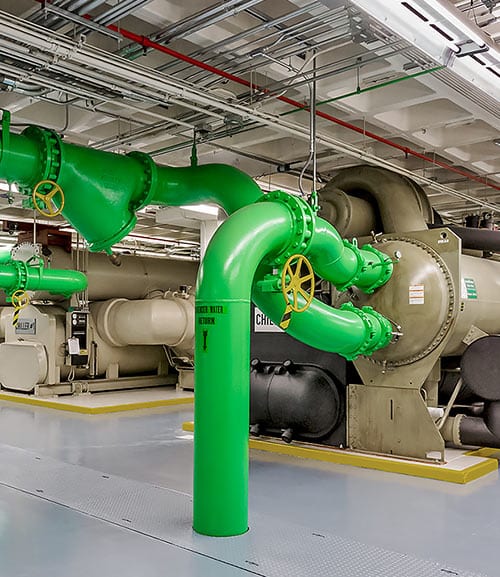By Andrew Cohen

Efforts to reduce the energy demands of California’s homes and office buildings are falling short, jeopardizing the state’s climate goals, according to a new report. Powering the Savings says current energy-efficiency programs, like rebates for retrofits and tax-incentives, aren’t enough to lower demand.
The report is a publication of Berkeley Law’s Center for Law, Energy & the Environment and UCLA Law’s Emmett Institute on Climate Change and the Environment.
Lead author Ethan Elkind, director of the joint Climate Change and Business Program, calls for a new ‘pay-for-performance’ approach to unlock capital market investment, simplify the retrofit process and make it a more attractive option for building owners.
Pay-for-performance programs set an energy-savings baseline for a building, and then provide incentive payments for savings achieved beyond that target. Elkind said this encourages building owners—and their retrofit investors—to deploy more substantial efficiency measures than they otherwise may have under traditional rebate or fixed incentive structures.
California has relied on voluntary, largely self-financed efficiency measures which encourage the adoption of energy efficient equipment and monitoring in existing buildings—measures that have so far failed to achieve deep energy-use reductions.
“For every dollar of efficiency investment, we spend an additional dollar in administrative costs,” Elkind said. “Most building owners aren’t aware of the savings they could achieve through the current incentive and rebate programs. Even if they are, it’s usually not worth it to them to spend the money on it upfront, especially if they have other financial priorities.”
Racing against the clock
Reducing the energy demand from buildings represents a cost-effective way to reduce pollution and increase savings, Elkind said. It can also help California meet its greenhouse gas reduction goals, as electricity use in existing buildings accounts for 21 percent of the state’s emissions. Without reductions in this sector, the state will struggle to meet benchmarks set by the California Global Warming Solutions Act: rolling back emissions to 1990 levels by 2020, with an additional 40 percent reduction planned by 2030 and a further 80 percent reduction by 2050.

A recent state-commissioned study showed that existing buildings possess two to three times greater economic efficiency potential than what is achievable through current programs. But without a state-sanctioned methodology and technology standard, Elkind fears utilities will be reluctant to base incentives on measured efficiency gains.
“We haven’t been able to reliably measure the energy we don’t use from already-adopted efficiency measures,” he said. “If we can’t measure and verify the saved energy, then we can’t prove that the efficiency investment produced the savings. Without those documented savings, we lack a predictable and long-term revenue stream to attract large-scale financing for long-lasting retrofits.”
Fortunately, software and research methodologies are emerging that can more accurately measure the energy saved by specific efficiency improvements. Elkind believes enough reliable data will be available in about a year to move forward at a broader scale.
“When people believe efficiency can be measured reliably, long-term investment opportunities can help reduce building energy loads by 25 to 40 percent,” Elkind said. “Much work has been done, and it’s just a matter now of putting this work into pilot projects to see how they do.”
Barriers and how to clear them
The report highlights four missing ingredients to serving up pay-for-performance: a standard way to measure and verify energy efficiency; regulatory certainty to encourage innovative financing; standardized energy data to make it easier to measure performance and reduce program costs; and a robust energy efficiency private sector workforce.

As a solution, the report recommends launching utility pilot projects based on emerging metering technologies to serve as the basis for pay-for-performance financing. The report also calls for: new regulations to help utilities procure energy efficiency savings like it was another form of energy generation; a rate structure that encourages improved financing mechanisms; and a roadmap for ways to improve the energy efficiency industry workforce based on pay-for-performance contracting.
“It’s time for aggressive and creative pilot projects with utilities and private sector companies, with regulator approval and encouragement,” Elkind said. “We need experimentation and testing and we need to do it soon.”
Powering the Savings is the 17th in a series of policy papers on how climate change will create opportunities for sectors of the business community and how policymakers can facilitate those opportunities. Each report results from one-day workshops with representatives from business, academic and policy sectors of the targeted industries. These events and the resulting papers are sponsored by Bank of America.